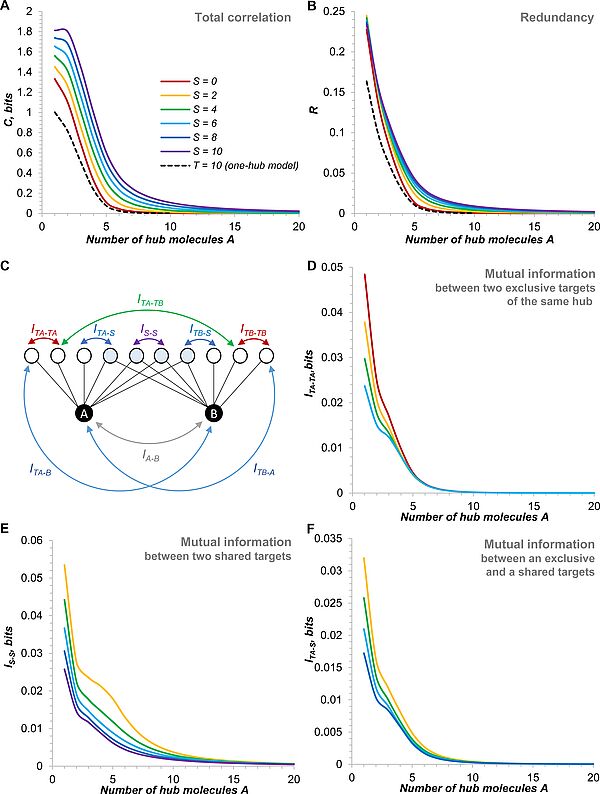Smirnov A (2022) How global RNA-binding proteins coordinate the behaviour of RNA regulons: an information approach. Comput Struct Biotechnol J doi:10.1016/j.csbj.2022.11.019
RNA-binding proteins are central players in post-transcriptional regulation. Some of them, such as the well-studied bacterial RNA chaperones Hfq and ProQ or the eukaryotic RNAi factor Argonaute, interact with hundreds-to-thousands of different RNAs and thereby globally affect gene expression. As a shared yet limited resource, these and other RNA-binding hubs drive strong competition between their multiple ligands. This creates a ground for significant cross-communication between RNA targets, which enables them to share information, “synchronise” their behaviour, and produce interesting biochemical effects, sometimes propagating across the highly connected RNA-protein network. This property is likely universally present in hub-centred networks and plays a key role in global gene expression programmes. It is also an important factor in biotechnology and synthetic biology applications of RNA/protein-based circuits. However, few studies so-far focused on describing and explaining this phenomenon from first principles. Here we introduce an information theory-based framework to comprehensively and exactly describe information flow in hub-centred networks. We show that information sharing can achieve significant levels in relatively small networks, provided the hub is present in limiting concentrations. The transmitted information is sufficient to noticeably affect the binding probabilities of competing targets but drops exponentially along the network. Target overexpression can disrupt communication between other targets, while hub sequestration boosts the crosstalk. We also find that overlaps between the interactomes of two different hubs create both entropic challenges and new forms of long-range communication between RNAs and proteins.

